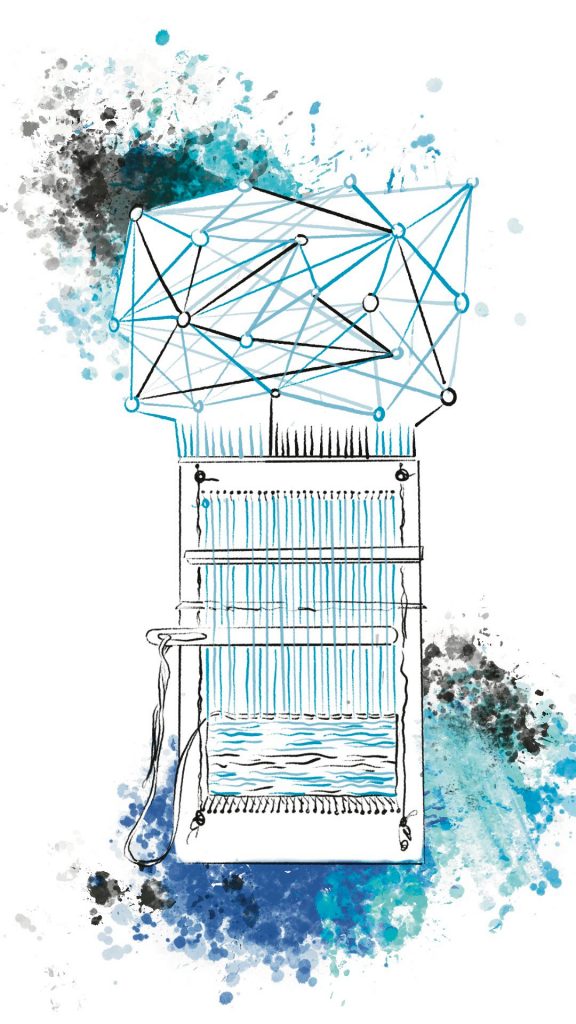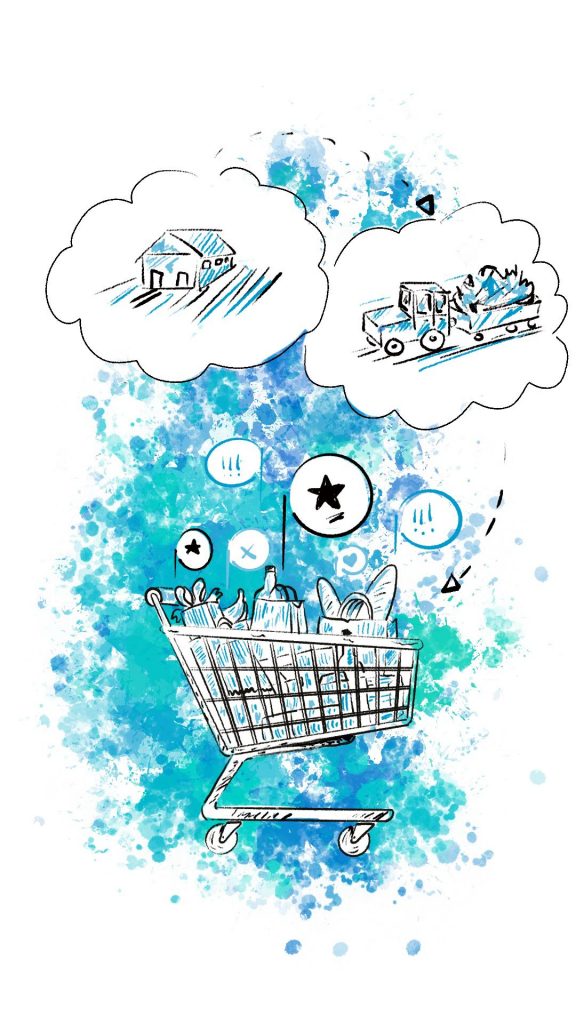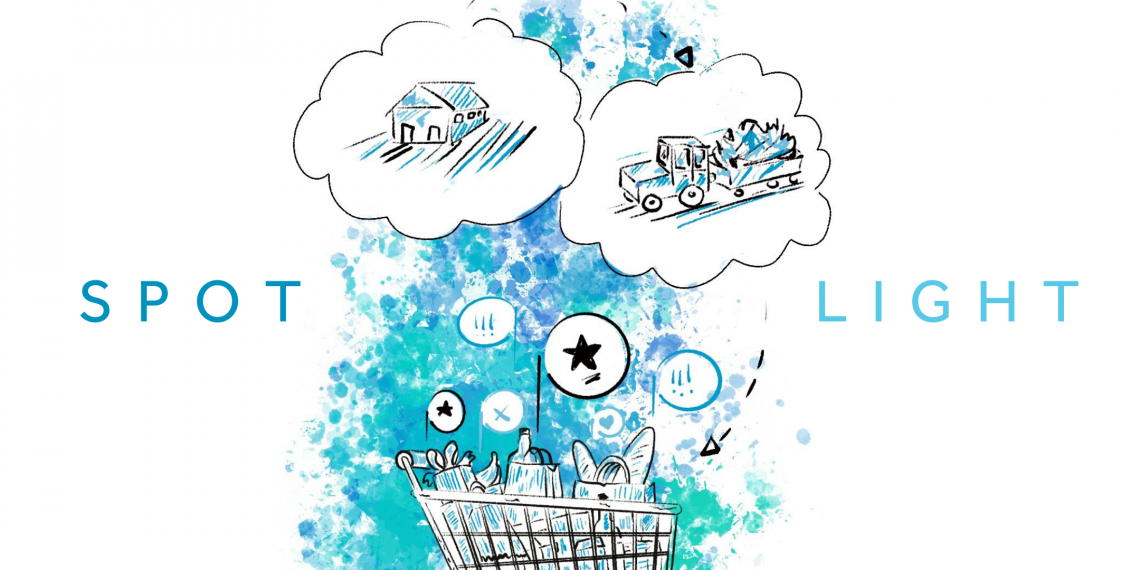Every day we make thousands of decisions. While some may seem simple, like deciding what’s for dinner – yes, sometimes even this choice can be difficult, but let’s assume it’s not –, there are others that force us to collect and analyse information, consider options and anticipate scenarios before moving forward. Regardless of how difficult the decision is, the goal is always the same: to make the best one possible. Can we do it?
Moving from our day-to-day decisions to the industrial ecosystem, we realise that the decision-making process can be, in many cases, quite complex – especially considering the significant amount of information to analyse, and the dynamic way it can evolve (particularly when it depends on the behaviour of several people, in the case of different consumers). For instance: you can’t decide what to do for dinner; you go through the supermarket to collect information and evaluate options, but in the middle of the decision-making process, you check the yogurts section and remember that you don’t have a single one at home. You waste two minutes checking the expiration date and putting the yogurts in the cart, before continuing shopping. Did you know that the decision you just made – to take the yogurts – and the importance you attributed to the expiration date can help producers and retailers make decisions about the products they put on the shelves, avoiding food waste?
In this edition of Spotlight, we embark on a journey that will take us from healthcare to energy, through retail, to understand how technology, in particular Artificial Intelligence, can help us make decisions – and how we can trust that they are the best possible -, how the behaviours of each person can support the development of solutions to support decision-making, and how our involvement in matters like the energy transition proves to be of greater importance when deciding on the solutions to design or the choices to follow.
(Still haven’t decided what to prepare for dinner? Join us in this edition of Spotlight. You’ll end up making a good decision, we’re sure about it).
How can we trust technology to help us make good decisions?
Artificial Intelligence (AI) has been increasingly used, in business contexts, to support decision-making – by allowing the analysis of large volumes of data – and, based on said analysis, to predict a certain result or specify a decision, i.e., telling a manager which decision to make concerning a certain operation, or a doctor which treatment to use and when to do it, depending on the prediction of the evolution of a tumour. However, and to make the right decision – and considering that this can have several consequences -, people should understand why technology is suggesting that path and not another. This was the starting point of the TRUST-AI project – Transparent, Reliable and Unbiased Smart Tool for AI, led by INESC TEC: how can we explain AI to those who can benefit from it?
“Artificial Intelligence has great potential in terms of how it can contribute to the economy, society, and even to scientific research; but, in some cases, said potential may be limited by the models’ explainability”, said Gonçalo Figueira, reinforcing that it influences the level of confidence in AI models and the results they may generate. “In order to adopt the model, the decision-maker must trust the results”, said the researcher at INESC TEC Centre for Industrial Engineering and Management (CEGI).
But how does one explain these models? By unrolling a type of skein and replacing a neural network with a mathematical expression, which ought to be as short as possible. “A neural network simulates the human brain, and it consists of a huge set of mathematical operations. These models are very large and impossible to explain directly. In this sense, what we are doing within the scope of this project is exploring another type of method, which leads to simple mathematical expressions, but whose performance is expected to match that of the neuronal network”, said Gonçalo Figueira, also stating that it is not easy to come up with a short model that performs well. “We are trying to combine the variables in many different ways, searching for that optimal expression that solves our issues – and finding the optimal one is unlikely”, he claimed.

In order to achieve this, the researchers involved in this project are working on three main dimensions. The first involves the development and improvement of the algorithms that will generate these models. The second is the development of a tool/interface that will allow users to interact directly with the models. Because they are short symbolic expressions, humans can look at them, inspect them – even recognise patterns they already use – edit and handle the model. This interface will allow a closer collaboration between people and Artificial Intelligence”, said Gonçalo Figueira, adding that the third dimension relates to the availability of an explainer – from which it will be possible to extract explanations about the models and facilitate their understanding.
Let us check a concrete example of the application of this solution. Considering one of the case studies of the project[1] – the use of AI to help predict the growth of a tumour and support healthcare professionals in making decisions about the treatment and the time to do it –, the idea is to include the user (e.g., physician, developer of the algorithm that will generate the model, an intermediate with some knowledge of both AI and the domain of application) in said process, in order to connect the first two and handle the model, so the physician can understand it and resort to it to meet his/her needs. This way, the solution under development within the scope of TRUST-AI targets the person responsible for establishing said connection.
“We already have a first prototype with an interface that runs any kind of algorithm, and we are further exploring the explainability of these models. Our goal is to provide an open-source solution, a tool as open and flexible as possible, ready to run any type of algorithm that manages these symbolic models, while being able to connect to any library. Basically, having a tool available for anyone to use and improve”, concluded Gonçalo Figueira.
How can our behaviours support decision-making?
From healthcare to retail – but keeping the mathematical expressions –, we now focus on the project Be Fresh – on incorporating consumer behavior into the supply chain planning of fresh products, also led by INESC TEC. Did you know that in retail, there is a rule followed by all actors in the supply chain that states that retailers only accept a food product when it meets a minimum freshness requirement? If a product does not reach the retailer with 2/3 of its remaining shelf life, it is returned. The criterion is called MLOR – Minimum life on receipt – and is followed worldwide, to ensure that a product arrives at the store with enough freshness to remain on the retailer’s shelf and be purchased and consumed by customers, before it expires. Even so, it can cause disruption and loss for various agents in the value chain.
“As part of a project we were working on, the MOBFOOD project – Mobiliser of scientific and technological knowledge to address the challenges of the agri-food market, and in liaison with different entities in the value chain, we realised the existence of this rule, followed by everyone. For example, a recently produced ice cream has a shelf life higher than one year, meaning that it must be delivered to the retailer approximately 400 days before expiration, in order to meet the requirement. If the retailers get the ice cream only one year before it expires, they no longer accept it”, clarified Sara Martins, emphasising that this was the motto for BeFresh. “When we started to analyse the problem, we realised that there was no scientific study on this topic. We found only one technical report from the Waste Resources Action Programme – WRAP”, mentioned the researcher from INESC TEC Centre for Industrial Engineering and Management (CEGI).
In this sense, the team of researchers aimed to understand whether easing this criterion could have an impact on supply chain sustainability and food waste. How? By analysing consumer behaviour. “Is the consumer aware of the product’s expiration date when buying it? Do they perceive products with a 10-day expiration date or a 20-day expiration date differently? Will they be more willing to buy or not because of this difference?” To address these questions, Sara Martins mentioned the analysis of data from a European retailer, concerning the purchase of yogurts, between December 2021 and March 2022.

“Thanks to said data, we know what was sold each day, i.e., what yogurts were sold, their expiration date and price. We were able to estimate the products the customer saw on the shelf and what they bought. Then, and by resorting to mathematical models, we can measure how the expiration date influences the customer choice and establish the willingness to pay for an extra day of the product. How much are they willing to pay if the product has three more days? To what extent do consumers value the product’s higher expiration date?”, mentioned the researcher.
(We already know the answer to these questions, but since our researchers are working on a paper that will be published soon, featuring the main results of this analysis, we will not tell you anything yet.)
According to the analysis of said behaviour, it’s possible to support both retailers and producers’ decisions. “By understanding how the customer values the expiration date, we can help retailers define a better discount policy to ensure that the product is sold without waste. Our goal is to avoid waste and contribute to a more sustainable supply chain”.
Even concerning the producers, the team of researchers realised that to ensure compliance with this criterion, they sometimes must adjust their production planning – to produce smaller batches and deliver everything in a timely manner. This leads to additional costs in terms of energy or water used in the production line’s cleaning processes, for example. In this sense, a flexible MLOR could be a potential solution. “We did a study in which we evaluated the impact of considering MLOR as a fixed or variable criterion and realised that we can make it flexible by 12%, without influencing the supply chain negatively”, said Sara Martins. (This paper, unlike the other, is already published – you can learn more here).
In addition, the researcher said that the last step of the project will be placing the producers and retailers at the same level and promote collaborative decision-making. “We will create a mathematical model to define a criterion that is beneficial to the entire supply chain”. But the researcher also pointed out that “when we reach a point where the chain wins as a whole, someone will benefit from it, while others will be negatively influenced; sharing benefits is extremely crucial in this context. This is the biggest challenge. Many of the collaborative ideas that emerge in supply chains fall apart because it’s not possible to implement said benefit-sharing models”, she concluded.
How can citizen involvement contribute to decision-making?
After healthcare and retail, we now focus on energy – more precisely, on energy transition. First, we will understand why it’s so important to involve citizens in this process; and then, how important it is to involve them, for example, in decision-making processes. Ready?
“The energy transition requires a radical change in the socio-technical system. It is not just a question of introducing technological innovations, but of changing the whole operation of the energy generation and consumption system towards its decarbonisation. In this sense, citizens must play a more proactive role towards more sustainable energy solutions, while changing their consumption patterns to benefit from these solutions. For example, by improving energy efficiency and optimising the use of renewable energy, e.g., turning on the washing machine at certain periods, when solar panels are generating energy”, explained Lia Patrício, coordinator of INESC TEC CEGI, when we asked her to tell us about the project Pocityf – A POsitive Energy CITY Transformation Framework – in particular, about the citizen engagement strategies explored within the scope of the project.
Before we present some examples of said strategies to better understand what citizen engagement means, it is worth explaining that Pocityf aims to develop, implement, and test positive energy building solutions – buildings that are positive in terms of energy, i.e., that generate more renewable energy than the one they consume. “Our great challenge is not the implementation into new buildings, but the adoption of solutions in historic cities, like Évora (Portugal) and Alkmaar (the Netherlands)”, said the INESC TEC researcher, highlighting that the project designed a citizen engagement strategy to each city.

As Lia Patrício explained, an engaged person is a person whose behaviour goes beyond the mere transactional use of buying and using a product or service. In other words, it means a person willing and ready to invest resources to get more information about a product or service, while discussing it, sharing ideas with others, helping others to use said product/service, and providing suggestions for improvement. “Concerning the energy sector, whenever I seek to know more about renewable energy solutions and to use them, valuing and favouring a sustainable solution, while adopting a proactive use to improve the sustainability of my consumption, and then providing feedback, I basically become an ambassador for these solutions. All these are behaviours that go beyond the mere transaction focused on the individual use of the product or service,”, mentioned Lia PatrícioBut how can this be done? As part of their PhD work, Bianca Banica and Manuel Aires de Matos, also researchers at CEGI, have carried out a survey of cities to understand the situation regarding the level of citizen engagement, what is already implemented and what can be done. “Our goal is to create conditions for cities to develop the most appropriate engagement strategies for their context and to share and learn from other cities, collaboratively and in a participatory way”.
According to Lia Patrício, there are several initiatives that can be implemented. “Maybe an informative website, or a department at local councils to present new sustainable energy solutions and to talk and listen to the feedback of the inhabitants. It doesn’t have to be all technological. These strategies to promote engagement behaviours can range from a peer-to-peer platform, where users can, for example, exchange energy and help people facing energy poverty, or a specific place at their local councils, where they can sit down and discuss these matters”.
These strategies must not only be adapted to the reality and culture of each city, but also to the different citizens who live in them. “In this sense, there is no ‘one size fits all’ – either in terms of city, or within the city itself, in terms of different groups of citizens. A good strategy must include different initiatives, depending on the objectives we seek in terms of behaviours, the level of engagement we want to foster, and the tools available”, explained the CEGI coordinator.
If there is a certain neighbourhood where people already have a tradition of participation, it is possible to advance to higher levels of engagement, namely involving them in the design of solutions. Whenever there is no starting point, it will be necessary to improve the knowledge on these topics. “It is very difficult to involve a citizen in the co-design of solutions that he/she does not know or use”, claimed Lia Patrício. Nevertheless, it is a work that requires not only two-way communication, but also a continuous effort – which, in the case of the Pocityf project, involves a broad set of actors in each city: local authorities, companies or associations.
This work is especially relevant to the success of new technologies that require a significant change in user behaviour, like sustainable energy solutions. In these cases, listening to potential users and calling them to participate in the technological innovation process can be a very important factor to the success of their adoption. Lia Patrício believes that there has been a paradigm shift to involve potential users beyond the study of their needs, actively involving them in the design of new solutions. “We may be co-creating through the proactive use of energy to improve sustainability, through suggestions and co-design of new solutions, or even active participation in the decision-making process on our city’s matters. It is very important to involve citizens in this process, in what will affect them”, emphasised the researcher, concluding that these strategies can contribute to empower people while bringing them closer to science and technology.
This journey introduced us to three projects that share two aspects: people and decisions. If, on the one hand, technology can help us choose the way forward – indicating us the best option, based on the information we have -, on the other hand, our behaviours and our choices can also be of greater relevance for others to decide. In the end, everyone wins. Whatever the option, there’s something that feels right – we want, and we should want to be part of the process.
(If you haven’t decided what to have for dinner yet, here’s our suggestion: you can always check out chatGPT.)
The researchers mentioned in this edition of the Spotlight section are associated with INESC TEC, UP-FEUP and IPP-ESTGF.
[1]TRUST-AI has three use cases in the areas of Retail, Energy and Healthcare.




 News, current topics, curiosities and so much more about INESC TEC and its community!
News, current topics, curiosities and so much more about INESC TEC and its community!